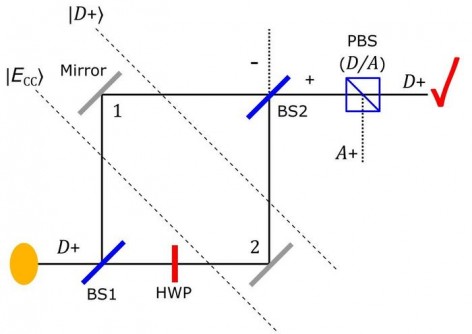The quantum Cheshire cat effect draws its name from the fictional Cheshire Cat in the Alice in Wonderland story. That cat was able to disappear, leaving only its grin behind. Similarly, in a 2013 paper, researchers claimed quantum particles are able to separate from their properties, with the properties travelling along paths the particle cannot. They named this the quantum Cheshire cat effect. Researchers since have claimed to extend this further, swapping disembodied properties between particles, disembodying multiple properties simultaneously, and even “separating the wave-particle duality” of a particle.
However, recent research, published in the New Journal of Physics on November 17, 2023, shows that these experiments don’t actually show particles splitting from their properties, but instead display another counterintuitive feature of quantum mechanics — contextuality.
Quantum mechanics is the study of the behavior of light and matter at the atomic and subatomic scale. By its nature, quantum mechanics is counterintuitive. The research team set out to fundamentally understand this counterintuitive nature, while exploring practical benefits.
“Most people know that quantum mechanics is weird, but identifying what causes this weirdness is still an active area of research. It has been slowly formalized into a notion called contextuality — that quantum systems change depending on what measurements you do on them,” said Jonte Hance, a research fellow at Hiroshima University and the University of Bristol.
A sequence of measurements on a quantum system will produce different results depending on the order in which the measurements are done. For instance, if we measure where a particle is, then how fast it is travelling, this will give different results to first measuring how fast it travels, then where it is. Because of this contextuality, quantum systems can be measured as having properties which we would expect to be mutually incompatible. “However, we still don’t really understand what causes this, so this is what we wanted to investigate, using the paradoxical quantum Cheshire cat scenario as a testbed,” said Hance.
The team notes that the problem with the quantum Cheshire cat paradox is that its original claim, that the particle and its property, such as spin or polarization, separate and travel along different paths, may be a misleading representation of the actual physics of the situation. “We want to correct this by showing that different results are obtained if a quantum system is measured in different ways, and that the original interpretation of the quantum Cheshire cat only comes about if you combine the results of these different measurements in a very specific way, and ignore this measurement-related change,” said Holger Hofmann, a professor at Hiroshima University.
The team analyzed the Cheshire cat protocol by examining the relation between three different measurements regarding the path and polarization of a photon within the quantum Cheshire cat protocol. These would have seemed to result in a logical contradiction, were the system not contextual. Their paper discusses how this contextual behavior links to weak values, and the coherences between prohibited states. Through their work, they showed that instead of a property of the particle being disembodied, the quantum Cheshire cat instead demonstrates the effects of these coherences, typically found in pre- and post-selected systems.
Looking ahead the team wants to expand this research, to find a way to unify paradoxical quantum effects as manifestations of contextuality, and to explain once and for all how and why measurements change quantum systems. “This will not only help us finally explain why quantum mechanics is so counterintuitive, but will also help us develop ways to use this weirdness for practical purposes. Given contextuality is inherently linked to scenarios where there is a quantum advantage over classical solutions to a given problem, only by understanding contextuality will we be able to realize the full potential of, for instance, quantum computing,” said Hance.
The research team includes Jonte R. Hance, Ming Ji, and Holger F. Hofmann from the Graduate School of Advanced Science and Engineering, Hiroshima University. Hance is also a research associate in the Department of Electrical and Electronic Engineering at the University of Bristol.
The research was funded by Hiroshima University’s Phoenix Postdoctoral Fellowship for Research, the University of York’s EPSRC DTP grant, the Quantum Communications Hub that is funded by EPSRC grants, and a JST SPRING grant.


